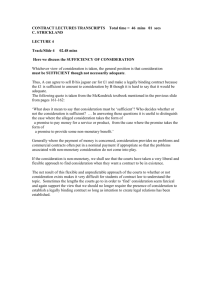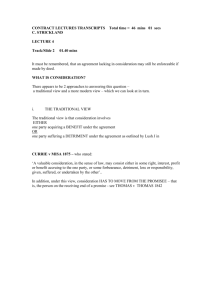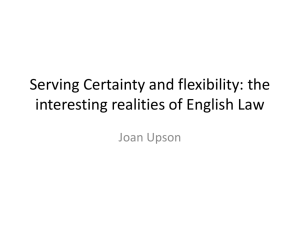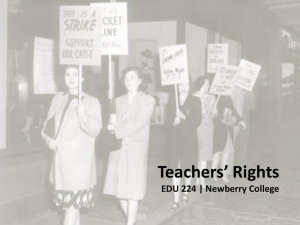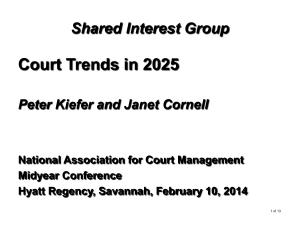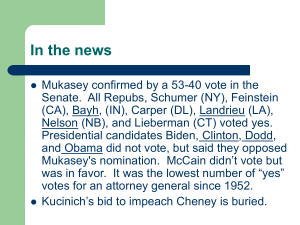CONTRACT LECTURES TRANSCRIPTS mins secs
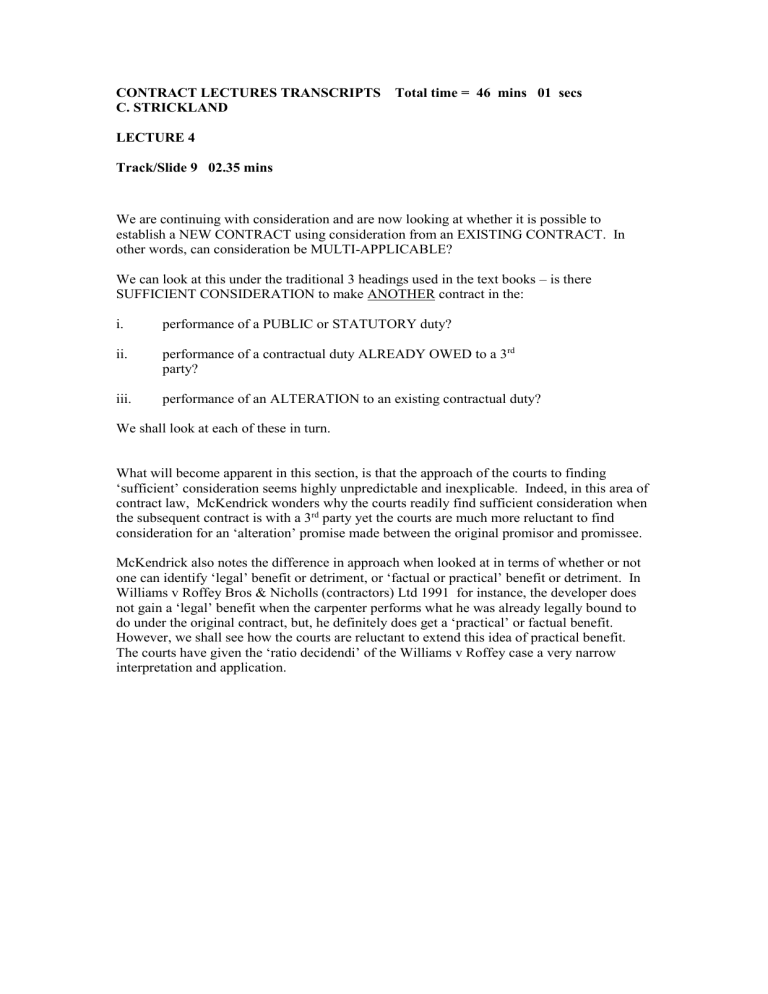
CONTRACT LECTURES TRANSCRIPTS Total time = 46 mins 01 secs
C. STRICKLAND
LECTURE 4
Track/Slide 9 02.35 mins
We are continuing with consideration and are now looking at whether it is possible to establish a NEW CONTRACT using consideration from an EXISTING CONTRACT. In other words, can consideration be MULTI-APPLICABLE?
We can look at this under the traditional 3 headings used in the text books – is there
SUFFICIENT CONSIDERATION to make ANOTHER contract in the: i. performance of a PUBLIC or STATUTORY duty? ii. performance of a contractual duty ALREADY OWED to a 3 rd party? performance of an ALTERATION to an existing contractual duty? iii.
We shall look at each of these in turn.
What will become apparent in this section, is that the approach of the courts to finding
‘sufficient’ consideration seems highly unpredictable and inexplicable. Indeed, in this area of contract law, McKendrick wonders why the courts readily find sufficient consideration when the subsequent contract is with a 3 rd party yet the courts are much more reluctant to find consideration for an ‘alteration’ promise made between the original promisor and promissee.
McKendrick also notes the difference in approach when looked at in terms of whether or not one can identify ‘legal’ benefit or detriment, or ‘factual or practical’ benefit or detriment. In
Williams v Roffey Bros & Nicholls (contractors) Ltd 1991 for instance, the developer does not gain a ‘legal’ benefit when the carpenter performs what he was already legally bound to do under the original contract, but, he definitely does get a ‘practical’ or factual benefit.
However, we shall see how the courts are reluctant to extend this idea of practical benefit.
The courts have given the ‘ratio decidendi’ of the Williams v Roffey case a very narrow interpretation and application.

